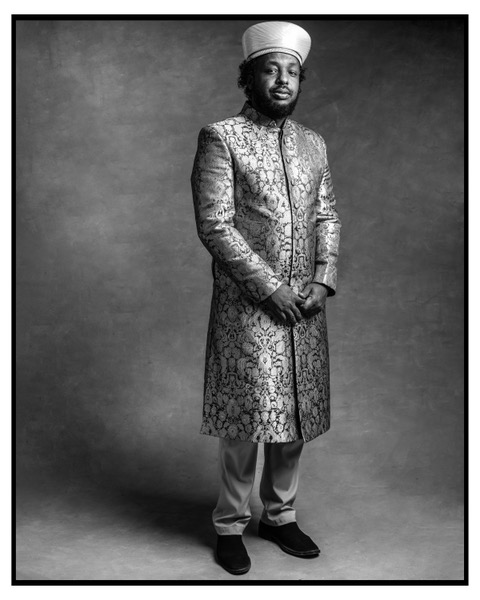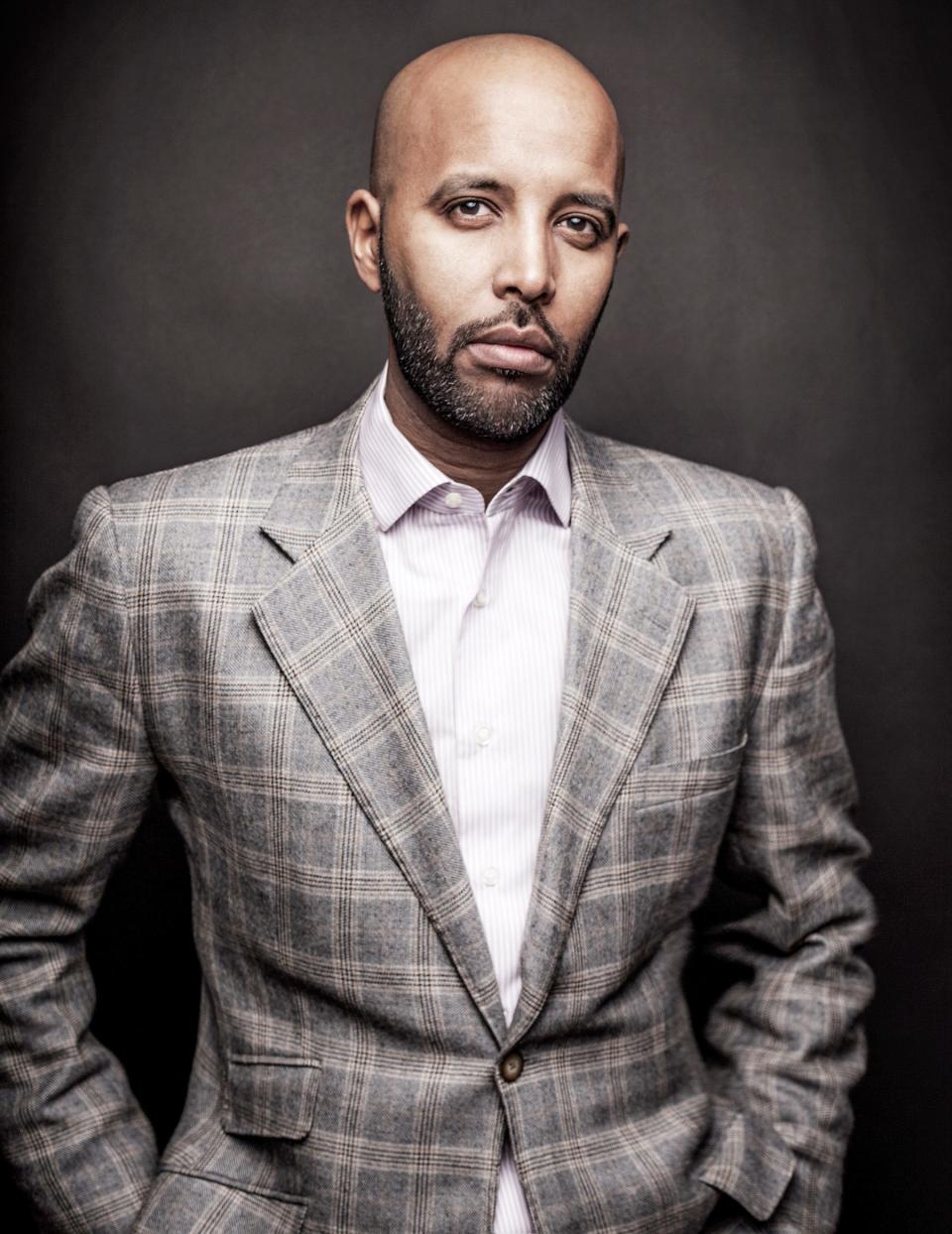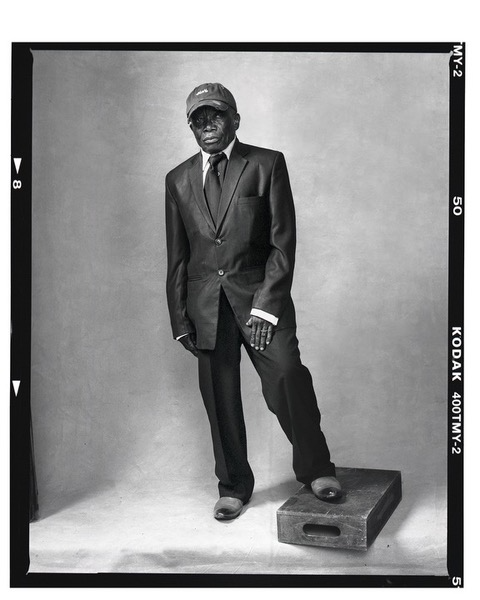Photo exhibit: Focusing on refugees,Tariq Tarey's images speak volumes

While sitting for his portrait being taken by photographer Tariq Tarey, Abi Neupane, a Bhutanese-Nepali refugee, spoke about his experiences coming to the United States and central Ohio.
“Here I’ve found safety, a chance to rebuild, and opportunities I could only dream of,” he said. “America’s embrace has given me hope, security and the chance to pursue my dreams.”
Iraqi refugee Sinan Falah, also having his portrait made, described the United States as “a land of vast opportunities.”
“Refugees contribute $1.5 billion in annual taxes to central Ohio,” he said. “This embrace by America empowers them to flourish and make valuable contributions to their new home.”
The youngest of those sitting for portraits, eight-year-old Felicien Bin Mzuri, who was born in the Nyarugusu Refugee Camp in Tanzania, had a more practical take on coming to America.
“My mom and dad tried hard to find me toys when we lived in the refugee camp, but it was super-tough. Now they got me tons of toys and I’m so happy!”
The photographs and the comments of these three, along with more than 30 additional portraits and words of refugees from African, Asian and Middle Eastern countries who live in central Ohio, are on view through April 28 at the Decorative Arts Center of Ohio in Lancaster.

“From Struggle to Strength: Inspiring Journeys of Central Ohio’s Refugee Community” is a series of beautiful black-and-white portraits of people of all ages who fled persecution or dire circumstances in their native countries to come to the United States. The photographs were created by a man who came as an asylum seeker himself to this country 26 years ago from Somalia, Tariq Tarey.
“I arrived at JFK airport in New York in 1997 with $72 in my pocket,” Tarey said. After arriving in the United States, he settled in Columbus.
More: After 141 years, Women in Music-Columbus has disbanded
Tarey's work in central Ohio
For more than two decades, Tarey, 45, has worked for Jewish Family Services in Columbus, for the past seven years as its director of Refugee Social Services.
He’s been making portraits of refugees for years, preferring to work with a four-by-five view camera in his Milo Arts Building studio in East Columbus. Tarey said he believes that the black-and-white medium endows his portraits with the sort of artistry and dignity found in the Depression-era photographs of Dorothea Lange.
“Her photographs gave us such history of that time,” he said. “I wanted to keep that style, that same sense of respect.”
Tarey is particular in differentiating between “immigrants,” “migrants” and “refugees,” the last of which he defines as having fled danger, persecution or both. His subjects have witnessed or experienced armed conflict, political persecution, human rights abuses, ethnic and religious conflicts and gender-based violence.
Their first year in the United States is their hardest, he said, struggling with language, finding work, transportation and acquiring a network of people to trust. Their joy, he said, comes with safety and religious freedom.
Tarey's photographs on display
At the Decorative Arts Center, the portraits are shown along with maps of the subjects’ native countries, information about political circumstances there and quotations from the refugees. After taking their pictures, Tarey spent hours interviewing his subjects and learning their stories.
“Of all those I interviewed, not a single one complained about life in America,” he said.
The portraits, 24-by-30 inches in size, are presented in four different rooms. One room shows Somali refugees; one shows Nepalis; another presents portraits of Syrians, Iraqis and Afghans; and another, people from the Congo, Burundi and Rwanda.

Jason Crabill, executive director of the Decorative Arts Center, said that Tarey’s portraits show “real people who have endured through unimaginable struggles to build new lives in central Ohio.”
Tarey said that part of his goal with the exhibit is to do away with misconceptions about immigrants.
More: New book shares experiences of over 250 Mauritanians, others deported from Ohio
“They’re not taking our jobs but building the economy,” he said. “Having refugees in the community enhances the city and the neighborhoods and broadens all of our perspectives.”
One of those refugees who continues to serve her adoptive community is Somalia native Munira Abdullahi, Ohio Statehouse representative for District 9. She said she felt “driven to serve the community.”
“Being sworn in was surreal, but a proud moment; having the elders present, it was their moment,” she said.

Tarey has created previous exhibits of refugees including “Forlorn in Ohio” about Somali refugees and “Bhutanese-Nepali Neighbors.” He is also a filmmaker and is at work on a book documenting central Ohio’s refugee populations. He plans to continue his photographic portrait work.
Concurrent with “From Struggle to Strength” at the Decorative Arts Center is an exhibit of paintings by the Egyptian-born, central Ohio artist Hani Hara.
At a glance
“From Struggle to Strength: Inspiring Journeys of Central Ohio’s Refugee Community” continues through April 28 at the Decorative Arts Center of Ohio, 145 E. Main St., in Lancaster. Admission is free. Hours: 11 a.m. to 4 p.m. Wednesdays through Fridays, 1 to 4 p.m. Saturdays and Sundays Call 740-681-1423 or visit www.decartsohio.org.
This article originally appeared on The Columbus Dispatch: Photographer Tariq Tarey exhibit at the Decorative Arts Center of Ohio
